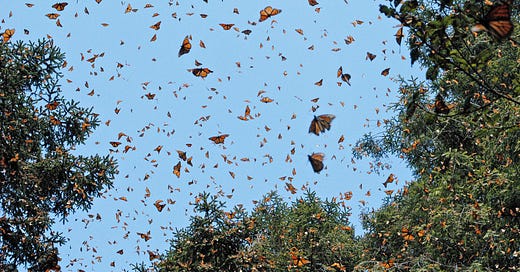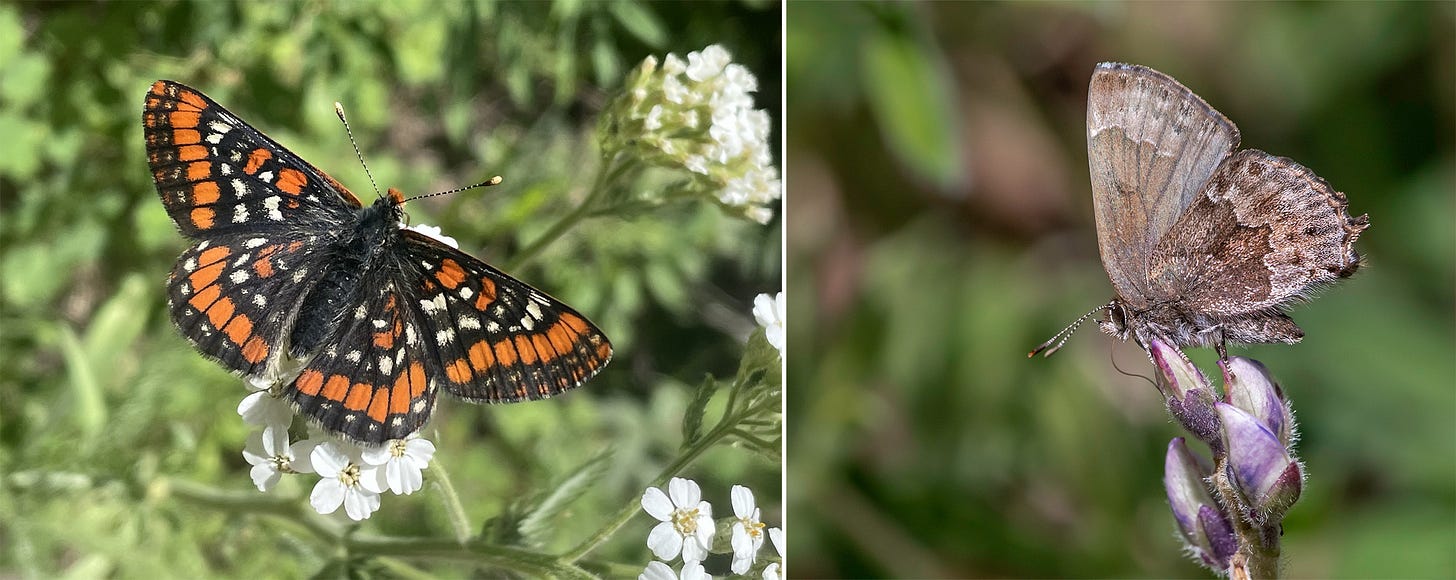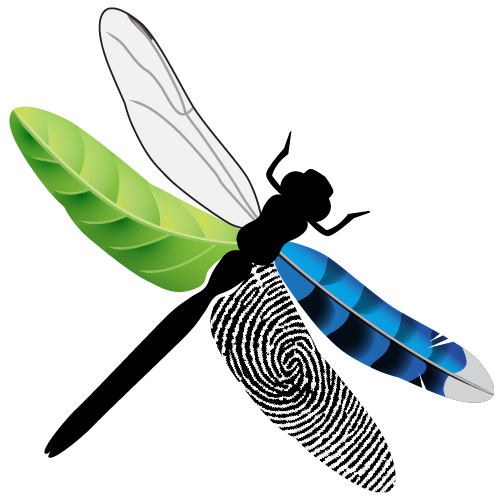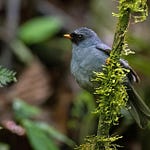Prologue
The Chasing Nature podcast launches today with butterflies — my essay and an interview about the fate of the Monarch (Danaus plexippus). Ernest H. Williams and I discuss why a familiar and widespread butterfly warrants new protection under U.S. law. But I begin the episode with some joyful noise from my neighborhood and then read a short essay titled “Butterflies and Terror” (included for you here below). If you’re new to basic Monarch ecology, my December 18 essay titled The Grace and Force of a Butterfly would be worthy reading before this episode. And for more about the podcast, here’s a trailer (including my poem read aloud to you from snowy woods).
Butterflies and Terror
By Bryan Pfeiffer
ON that terrible day, when airplanes became weapons, when so many people died, the skies over America oddly held grace on the wing. In the autumn sun and smoldering ruins, Broad-winged Hawks were drifting south on gentle winds.
Those of us on mountaintops that morning won’t ever forget the confluence of the fall hawk migration and a terrorist attack. It became even more surreal once commercial air traffic was grounded for the day, at which point the skies belonged once again to insects and birds.
Apart from the dread and sadness, what I remember most about September 11, 2001, weren’t the hawks in flight, but rather the Monarchs on their way south toward Mexico. These gossamer butterflies knew nothing of twisted religious ideologies, the brutality of warfare, the delusions of nation-building. The Monarchs knew only to fly toward some unknown destination in order to survive the winter.
Confused and helpless, I might have turned that day from the mountain for home, for understanding, for grieving. But there would be time for that. Instead, I held to ritual, to nature, to science, to my plan before the terror that morning. After watching hawks, I turned my attention to the Monarchs.
There were lots of them at the base of the mountain, dancing in open fields to take nectar from red clover and purple vetch. So I waded in among the flowers and the fluttering, and with gentle swings of my insect net I caught Monarch butterflies on 9/11. Holding each one with due respect, I affixed to the underside of its left hind wing a tiny sticker, a tag, bearing a unique identification number.
And then, after taking a few notes and paying my regards, I set free every Monarch, onward along its journey toward wintering preserves in Mexico, so that perhaps, months later, a person (whom I’ll probably never meet) might retrieve it, see my tag on the hind wing, and record the ID number. We call it data — the low-tech way citizens and scientists across the nation track the journey of this insect and learn more of its incredible life so that we might, if we’re good enough, make sure that the Monarch and its migration shall never perish from this Earth.
But it is of course so much more than data. Even those of us who have tagged thousands of Monarchs know that every encounter is a sacred act. To catch and hold a butterfly weighing less than an autumn breeze, to then release it to the winds of fate, only to have it held again by another human months later in Mexico — well, that may be the most profound thread I’ve ever traversed on the tangled web of life.
The world changed so much on 9/11. We knew it before day’s end. As it turns out, the Monarch’s world was changing as well, becoming less hospitable for them. Except that the Monarchs will never know it. Only we can know it.
Apart from adapting, the Monarch butterfly cannot alter its fate. Only we can. And that’s no platitude. You and I can indeed make a difference for these butterflies, something I discuss with Ernest Williams in our podcast interview.
Unlike so many other wild species at risk, Monarchs fly in our gardens and schoolyards, our farms and cities, in our hearts and minds. And in the end, can we ever hope to live in any kind of harmony with people halfway around the world if we can’t even make peace among our butterflies here at home?

Podcast Episode Notes
More detail on the state of the Monarch, including a summary of its dual life in the U.S. and Mexico, is in my December 18 essay titled The Grace and Force of a Butterfly.
My podcast guest Ernest H. Williams also sits on the board of the Monarch Butterfly Fund. Two of his research subjects (pictured below) are Gillett’s Checkerspot (© Olivia Bergeron via iNaturalist Creative Commons) and Frosted Elfin (© Bryan Pfeiffer).
The USFWS’s 55-page proposal is packed with information; but the FAQs at the Services’s Monarch resource page are easier to understand.
Podcast music courtesy of guitar virtuoso D. Davis here in Vermont.











Share this post